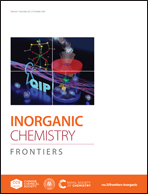Mitochondria-targeting monofunctional platinum(ii)–lonidamine conjugates for cancer cell de-energization†
Abstract
Monofunctional Pt(II) complexes represent a class of antitumor agents that may expand the antitumor spectrum and overcome the drug resistance of the clinically used cisplatin and its derivatives. Herein, we designed three novel monofunctional Pt(II) complexes, namely, MPL-I, MPL-II and MPL-III, by anchoring lonidamine (an inhibitor of mitochondrial hexokinase) to the Pt(II) centre for the selective de-energization of cancer cells. Among them, MPL-III is more potent than cisplatin against triple negative breast cancer MDA-MB-231 cells and exhibits relatively lower cytotoxicity on breast epithelial cells. Intracellular distribution studies reveal that MPL-III mainly accumulates in the mitochondria. Furthermore, MPL-III induces detrimental changes in the mitochondrial ultrastructure and significant loss of the mitochondrial membrane potential, inhibits glycolysis and disrupts mitochondrial respiration. As a consequence, MPL-III causes cell cycle arrest in the G0/G1 phase, and mitochondria-mediated apoptosis involving caspase activation and cytochrome c release. RNA-sequencing data show that MPL-III perturbs the pathways including DNA damage, metabolic process and transcription regulator activity. Our research provides an in-depth study and a new design strategy for effective mono-functional platinum complexes with action mechanisms distinct from those of the clinical platinum-based anticancer drugs.



 Please wait while we load your content...
Please wait while we load your content...